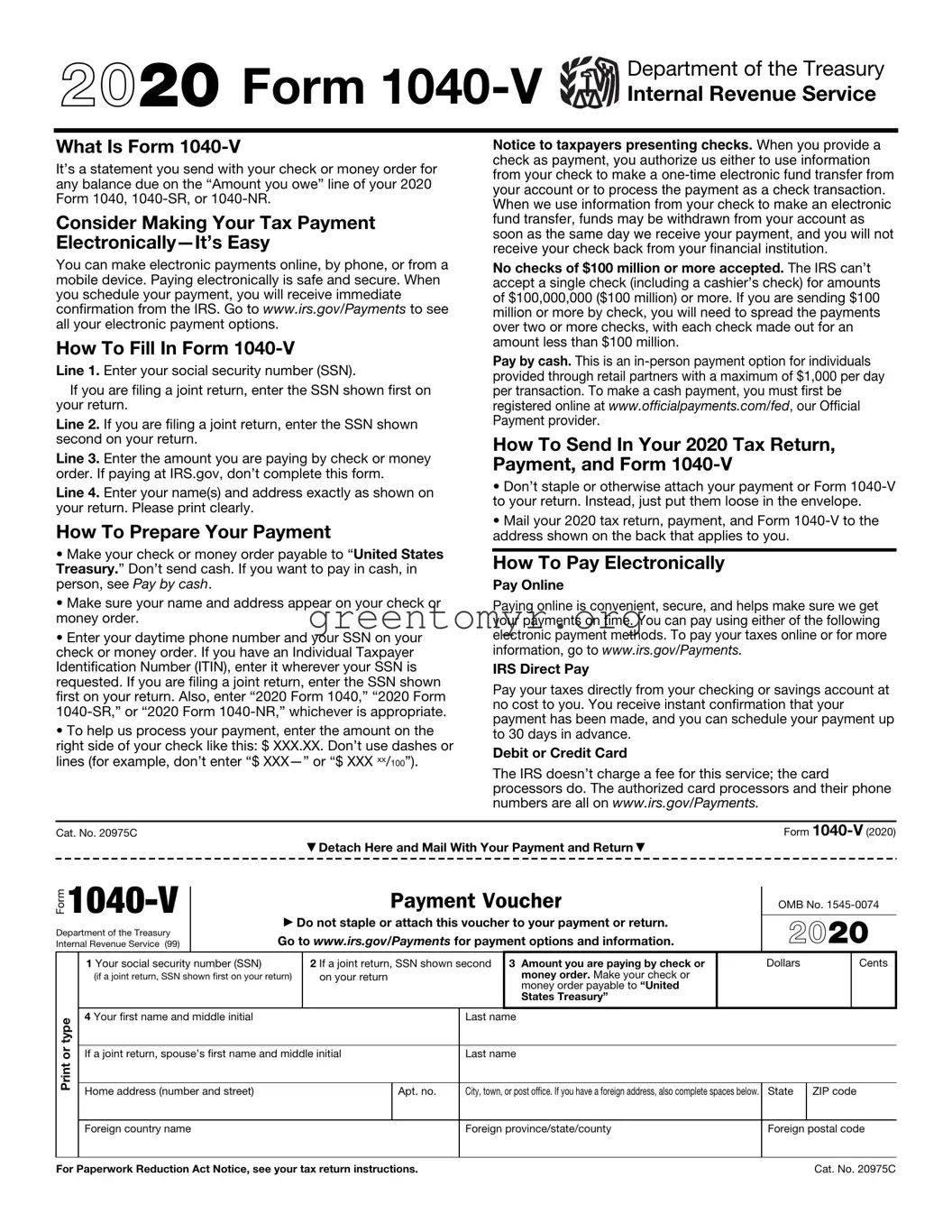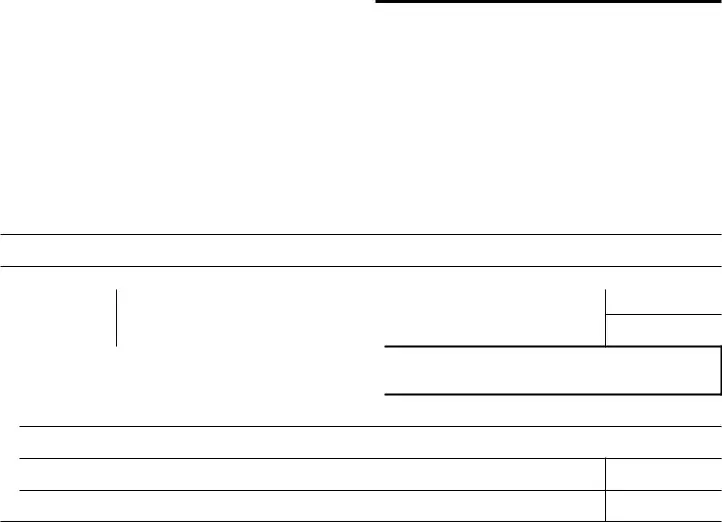What Is Form 1040-V
It’s a statement you send with your check or money order for any balance due on the “Amount you owe” line of your 2020 Form 1040, 1040-SR, or 1040-NR.
Consider Making Your Tax Payment Electronically—It’s Easy
You can make electronic payments online, by phone, or from a mobile device. Paying electronically is safe and secure. When you schedule your payment, you will receive immediate confirmation from the IRS. Go to www.irs.gov/Payments to see all your electronic payment options.
How To Fill In Form 1040-V
Line 1. Enter your social security number (SSN).
If you are filing a joint return, enter the SSN shown first on your return.
Line 2. If you are filing a joint return, enter the SSN shown second on your return.
Line 3. Enter the amount you are paying by check or money order. If paying at IRS.gov, don’t complete this form.
Line 4. Enter your name(s) and address exactly as shown on your return. Please print clearly.
How To Prepare Your Payment
•Make your check or money order payable to “United States Treasury.” Don’t send cash. If you want to pay in cash, in person, see Pay by cash.
•Make sure your name and address appear on your check or money order.
•Enter your daytime phone number and your SSN on your check or money order. If you have an Individual Taxpayer Identification Number (ITIN), enter it wherever your SSN is requested. If you are filing a joint return, enter the SSN shown first on your return. Also, enter “2020 Form 1040,” “2020 Form 1040-SR,” or “2020 Form 1040-NR,” whichever is appropriate.
•To help us process your payment, enter the amount on the right side of your check like this: $ XXX.XX. Don’t use dashes or lines (for example, don’t enter “$ XXX—” or “$ XXX xx/100”).
Notice to taxpayers presenting checks. When you provide a check as payment, you authorize us either to use information from your check to make a one-time electronic fund transfer from your account or to process the payment as a check transaction. When we use information from your check to make an electronic fund transfer, funds may be withdrawn from your account as soon as the same day we receive your payment, and you will not receive your check back from your financial institution.
No checks of $100 million or more accepted. The IRS can’t accept a single check (including a cashier’s check) for amounts of $100,000,000 ($100 million) or more. If you are sending $100 million or more by check, you will need to spread the payments over two or more checks, with each check made out for an amount less than $100 million.
Pay by cash. This is an in-person payment option for individuals provided through retail partners with a maximum of $1,000 per day per transaction. To make a cash payment, you must first be registered online at www.officialpayments.com/fed, our Official Payment provider.
How To Send In Your 2020 Tax Return, Payment, and Form 1040-V
•Don’t staple or otherwise attach your payment or Form 1040-V to your return. Instead, just put them loose in the envelope.
•Mail your 2020 tax return, payment, and Form 1040-V to the address shown on the back that applies to you.
How To Pay Electronically
Pay Online
Paying online is convenient, secure, and helps make sure we get your payments on time. You can pay using either of the following electronic payment methods. To pay your taxes online or for more information, go to www.irs.gov/Payments.
IRS Direct Pay
Pay your taxes directly from your checking or savings account at no cost to you. You receive instant confirmation that your payment has been made, and you can schedule your payment up to 30 days in advance.
Debit or Credit Card
The IRS doesn’t charge a fee for this service; the card processors do. The authorized card processors and their phone numbers are all on www.irs.gov/Payments.


